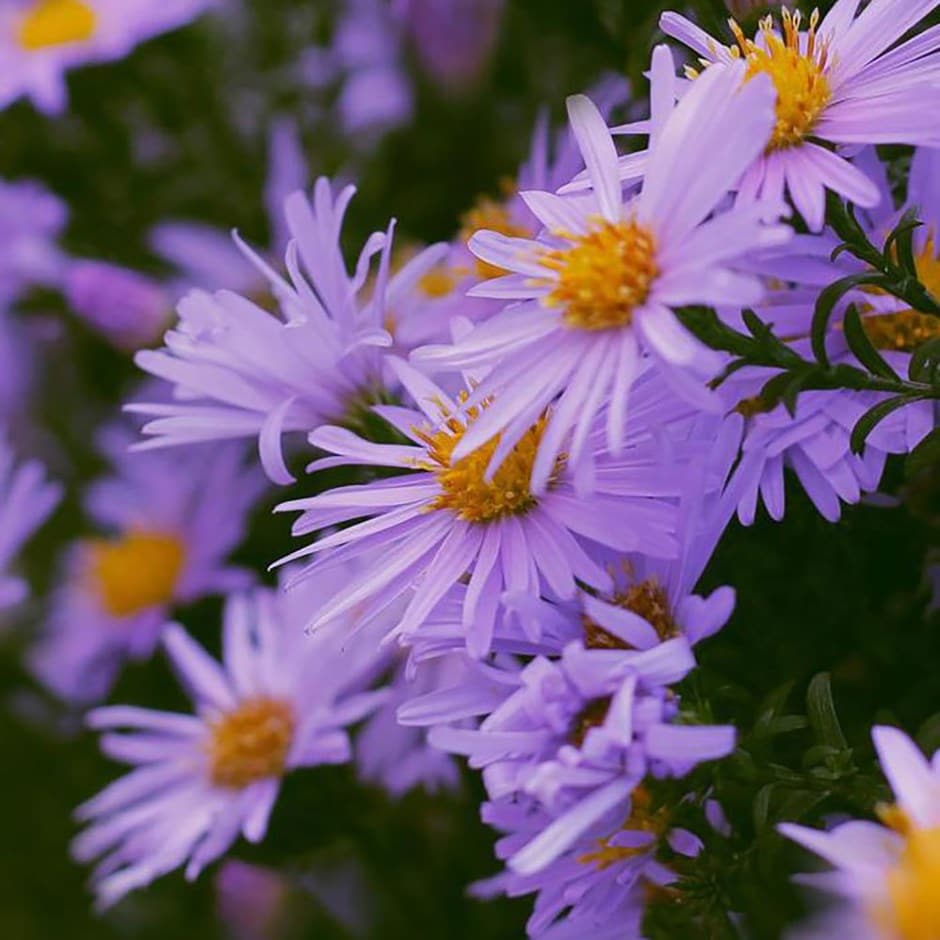Symphyotrichum oblongifolium 'October Skies'
aster october skies
- 9cm pot
- £9.99
- In stock (shipped within 2-3 working days)
- 3 × 9cm pots
- £22.99 £7.66 each
- In stock (shipped within 2-3 working days)
- 6 × 9cm pots
- £36.99 £6.17 each
- In stock (shipped within 2-3 working days)
Delivery options
- Standard £5.99
- Position: full sun or partial shade
- Soil: well-cultivated, fertile, moist soil
- Rate of growth: average
- Flowering period: August to October
- Hardiness: fully hardy
A compact variety with lilac-blue daisy-like flowers with yellow centres from late summer and lance-shaped, aromatic mid-green leaves. This is a pretty cousin of Aster (Michaelmas Daisy) that will self-seed where happy and brighten up a mixed or herbaceous border after other perennials have done their bit.
Deer and rabbit resistant, drought and salt tolerant, the abundant and long-flowering blooms of 'October Skies' are a clarion call for butterflies, bees and other pollinating insects.
Deer and rabbit resistant, drought and salt tolerant, the abundant and long-flowering blooms of 'October Skies' are a clarion call for butterflies, bees and other pollinating insects.
Choose a location with full sun to ensure the best flowering.
Asters prefer well-drained, loamy soil rich in organic matter. If your soil is heavy or clay-based, incorporate compost or well-rotted manure to improve drainage and fertility.
Space the plants about 45-60cm (18-24in) apart to give them room to grow and ensure good air circulation, which helps prevent diseases.
Insert twiggy prunings early in the season to provide invisible and effective support.
To encourage bushier growth and more flowers, pinch back the stems when the plants are about 15-20cm (6-8in) tall - you can also remove spent flowers to extend the blooming period.
Leave top growth on through the winter to provide protection and valuable food for birds and insects, or cut down in autumn if the plants are particularly spent.
Apply a thick 5-7cm (2-3in) mulch around the base of the plant in the spring, taking care not to cover the crown.
Asters prefer well-drained, loamy soil rich in organic matter. If your soil is heavy or clay-based, incorporate compost or well-rotted manure to improve drainage and fertility.
Space the plants about 45-60cm (18-24in) apart to give them room to grow and ensure good air circulation, which helps prevent diseases.
Insert twiggy prunings early in the season to provide invisible and effective support.
To encourage bushier growth and more flowers, pinch back the stems when the plants are about 15-20cm (6-8in) tall - you can also remove spent flowers to extend the blooming period.
Leave top growth on through the winter to provide protection and valuable food for birds and insects, or cut down in autumn if the plants are particularly spent.
Apply a thick 5-7cm (2-3in) mulch around the base of the plant in the spring, taking care not to cover the crown.
- Humans: Harmful if eaten

